The cucumbers plants are loaded and I have an abundance of cucumbers! Time for canning dill pickles!
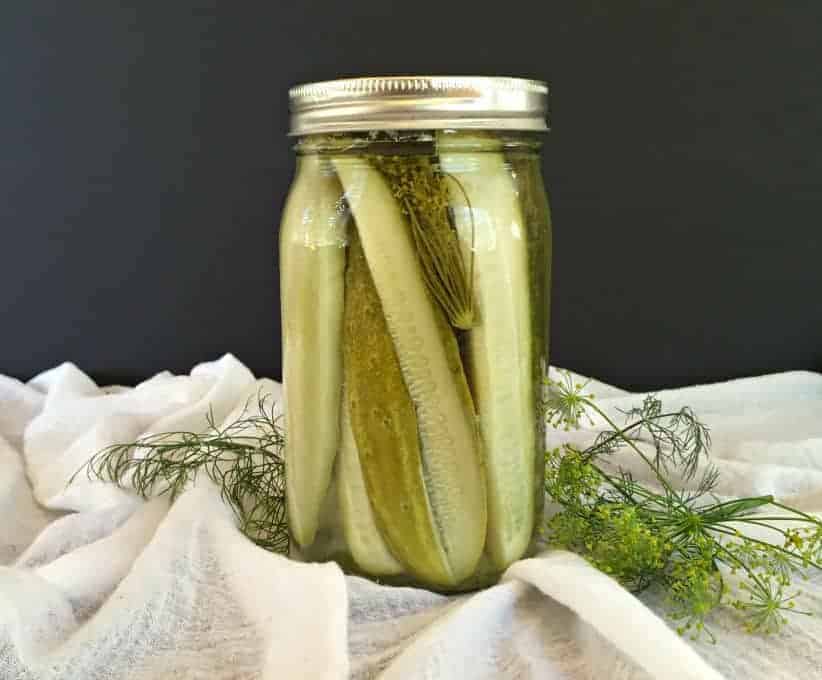
Cucumbers
In my garden, I have four cucumber plants. Three are pickling cucumbers and one is just for eating. Of course, you can eat pickling cukes too. They make a great slice and eat cucumber, but they are also perfect for making dill pickles!
Pickling cucumbers are best for making pickles. Love making pickles? You'll also want to try these Kosher Dill Pickle Spears.
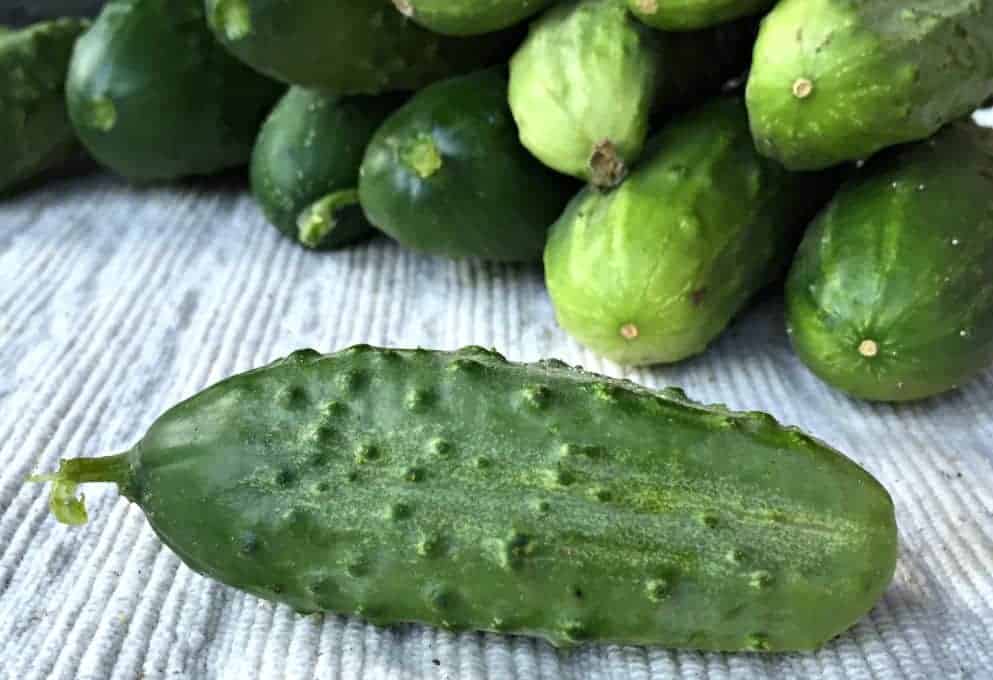
Tips for making dill pickles
- Use white distilled vinegar...you often use apple cider vinegar for bread and butter pickles.
- Use pickling salt. Pickling salt (or canning salt) doesn't have any iodine or anti-caking agent added. This helps keep your brine clear and not cloudy.
- Use pickling cucumbers! They are different than an eating cucumber.
- Use fresh dill. You want the flowering head for your pickles.
- Wait a few weeks before trying...they need time to pickle!
- I prefer to use whole, small pickling cucumbers. Once they get too large, I slice them into spears.
- Use pint or quart-sized jars.
Processing pickles
My grandmother's original recipe did not water bath the pickles, but as more knowledge has been gathered about home canning, recommended practices have changed. I now recommend either water bath canning or low-temperature pasteurization as recommended by the NCFHP.
Low-temperature pasteurization
This method is recommended by the NCFHP for certain types of pickled foods. Only use this method when a recipe indicates it has been approved for low-temperature pasteurization.
This method yields a better pickle texture but must be carefully monitored to avoid possible spoilage.
- Place filled jars in a water bath canner filled halfway with warm water (120° - 140°F)
- Add hot water to canner so the level of the water is one inch above the jars
- Heat the water to 180-185°F for 30 minutes. Use a thermometer to be certain the water temperature does not go below 180°F for the entire 30 minutes
- After 30 minutes, immediately remove your jars from the canner and place on a cooling rack until fully cool. Then test the lids for a seal.
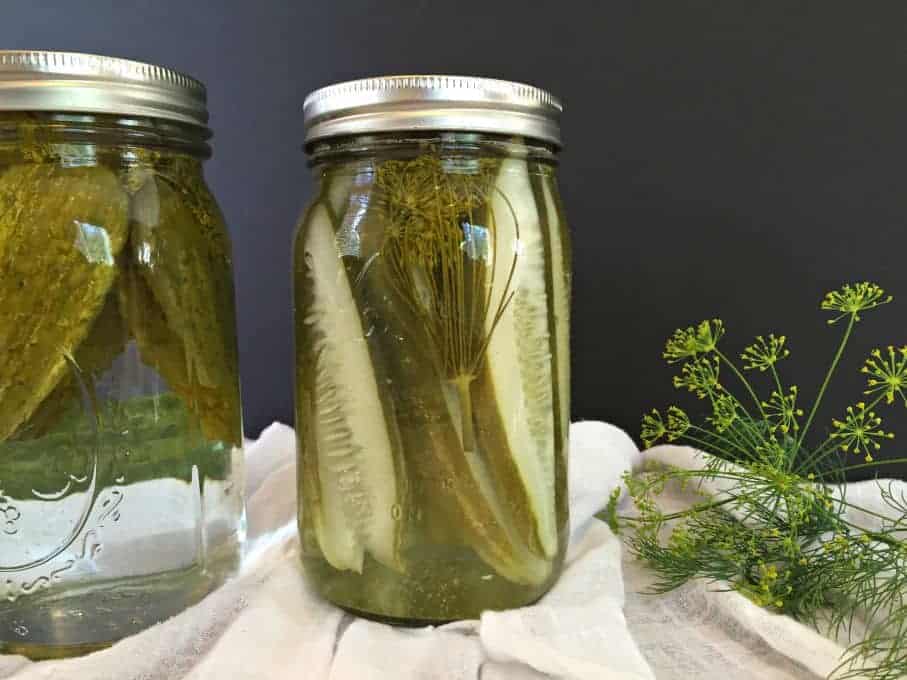
This recipe has been adjusted to reflect best practices as defined by the National Center for Home Food Preservation.
If you make this recipe, I’d love to hear about it! Leave a comment below and snap a picture and tag me on Instagram @beyondthechickencoop
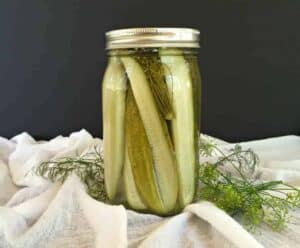
Dill Pickles
Equipment
- Large Canning Pot
- Quart Canning Jars (or use pint size jars)
Ingredients
Presoak
- 8 pounds pickling cucumbers (3-5 inch)
- 2 gallons water
- ¾ cup canning salt
Pickles
- 1 ½ quarts white vinegar (5%)
- 2 quarts water
- ½ cup canning salt
- 14 heads of fresh dill
Instructions
Presoak
- Wash cucumbers. Cut a very thin slice off blossom end and discard, but leave ¼-inch of stem attached.8 pounds pickling cucumbers
- Dissolve ¾ cup salt in 2 gallons of water. Pour over cucumbers and let stand 12 hours. Drain2 gallons water, ¾ cup canning salt
- Combine vinegar, 2 quarts water and ½ cup canning salt. Heat to boiling.1 ½ quarts white vinegar, 2 quarts water, ½ cup canning salt
- Place small cucumbers directly in clean canning jars along with fresh dill heads14 heads of fresh dill
- Pour boiling pickling mixture into jars leaving ½ inch headspace. Wipe down rim of jars, add lid and ring.
Process
- Process jars using Low Temperature Pasteurization Treatment (see Notes below) or in a water bath canner according to the recommended times (see chart below in the Notes)
Notes
-
- Place filled jars in a water bath canner filled halfway with warm water (120° - 140°F)
-
- Add hot water to canner so the level of the water is one inch above the jars
-
- Heat the water to 180-185°F for 30 minutes. Use a thermometer to be certain the water temperature does not go below 180°F for the entire 30 minutes
-
- After 30 minutes, immediately remove your jars from the canner and place on a cooling rack until fully cool. Then test the lids for a seal.
- Source - NCHFP
- Process pints for 10 minutes (0-1000 ft in altitude)
- Process quarts for 15 minutes (0-1000 ft in altitude)
- Add 5 minutes to processing time at altitudes 1001-6000 ft
- Add 10 minutes to processing time at altitudes above 6000 ft
Nutritional Disclaimer:
Nutritional information is provided as a courtesy and should only be construed as an estimate rather than a guarantee. To obtain the most precise nutritional information in a provided recipe, you should calculate the nutritional information with the exact ingredients you are using when preparing the recipe using your preferred nutrition calculator.
Nutrition



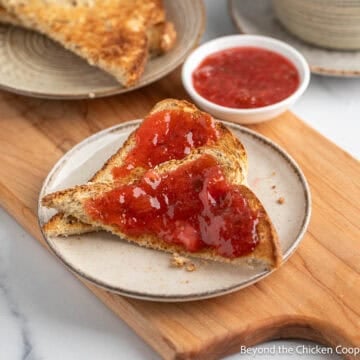
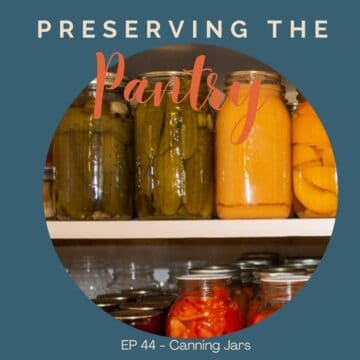
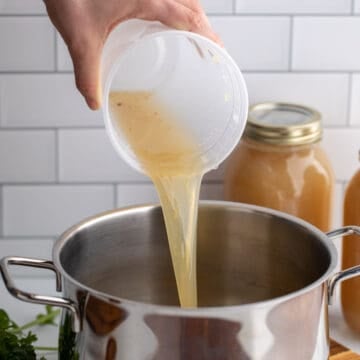
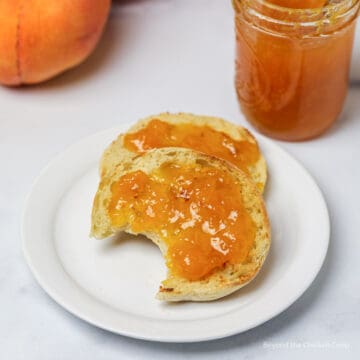

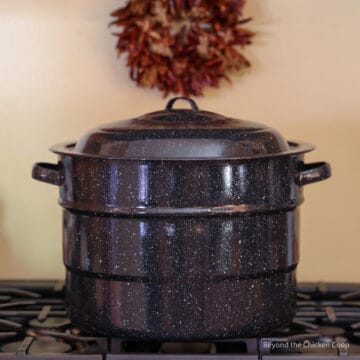
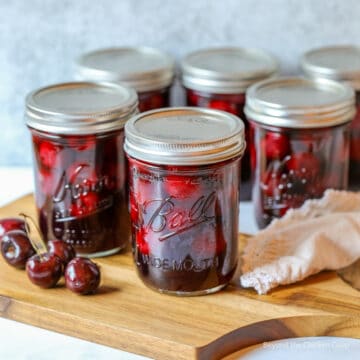
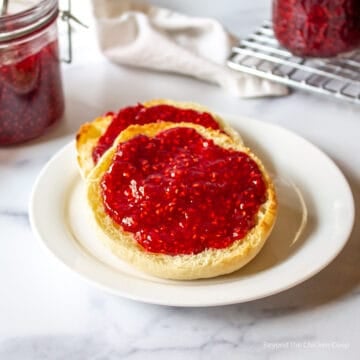
K says
Hey, I am just wondering how long they are good for if they do seal properly?
Kathy says
Most canned goods should be consumed within a year.
Terri says
I just made these 9 pints and 18 quarts, can’t wait to taste them 🙂 thank you for posting
Kathy says
That's wonderful!!! Enjoy 🙂
Carolah says
Do you bring lids to a boil then place on jars after they were wiped down or do you put lids on straight out of packaging?
Kathy says
Hi Carolah,
I wash the lids in warm soapy water and then rinse well. I don't boil them before adding to the jars.
Enjoy
Kathy 🙂
Julie says
Grape leaves were originally added to pickles to help keep them crisp. They are high in tannins, which inhibit the enzyme that makes pickles get soft over time. I haven't tried your recipe, but it looks easy and quick.
Kathy says
Makes sense! Thanks for the info. 🙂
Deb says
I made six jars of these delicious pickles. I waited about 5 weeks and we opened the first jar. Delicious! It was gone in a day between my husband and I. I put them out for a family gathering and ended up using two jars at the gathering and then having my nephew begging me to let him take one home. So delicious and easy. Going to make some more and make about 10 jars this time because my sister asked me to make an extra large jar for extra pickle juice. Thank you for the recipe!
Kathy says
Thank you so much for letting me know! These always disappear quickly in my house too! The hardest part is waiting a few weeks for them to pickle!
David says
KATHY
So you do not put the jars of pickel , in boiling water to seal the jars ?
Is the 3-4 week a wait period . How long can you store them?
Kathy says
I do not hot water bath the jars of pickles. I do pour boiling hot brine into the jars and then place the lids. The jars will seal as the liquid begins to cool. You can eat the pickles as soon as you'd like, but I find 3-4 weeks is about the right amount of time for the brine to turn the cucumbers into pickles. I have had jars of pickles for more than a year that are still great. Always check your jars to make certain they are still sealed and there is no odor or signs of mold.
CCC says
The Grape leaves are a natural preservative. At least, according to the website for Grillo's pickles. They are my new favorite store bought yummies!
karrie @ Tasty Ever After says
There is a ton of pickling cukes in my CSA box every week so now I have a great recipe to use them in. Thanks for sharing and for all the useful pickling tips 🙂
Kathy says
This recipe is perfect for your extra cukes! I hope you give it a try!
Annie @ The Garlic Diaries says
My husband would love me so much if I made these, haha! He is obsessed with dill pickles. I need to give it a try!
Kathy says
You'd better make him some pickles!
Manali @ CookWithManali says
looks great , I have never made pickle but you have motivated me to do so!
Kathy says
We eat and make a lot of pickles at our house!
Anu-My Ginger Garlic Kitchen says
These looks so delicious, Kathy! This recipe looks so easy, and I have never pickled dilli — so this is a must try recipe for me! Thank you for this lovely share! 🙂
Kathy says
Give it a try!
Laura @ Raise Your Garden says
Hi Kathy, well I've never actually canned anything before, I think it is the sterilization process that intimidates me. But I need to try! I have 3 huge pickle eaters in my house and I'd bet they love these. So maybe my cukes totally bombed with year, but I have dill in abundance. I stand corrected. I did have dill until my husband weedwacked the yard. You win some. You loose some.
Kathy says
I'll bet it smelled good while he was plowing down that dill!
dble says
always smells good when i plow dill
Brett says
The reason for the grape leaf is that it contains tannin which helps to keep your pickles crisp. You can use oak leaves or black tea, too.
Kathy says
Thanks so much! I knew there had to be a reason for adding it. I may have to try it again...just have to get some grape leaves!
Kennedy Cole says
This looks great! We also have a ton of cucumber crops, so this looks like a great recipe to try! We used to pickle cucumbers A TON! And this post totally reminded me of how good homemade pickles are! Thanks for sharing! 😀
Kathy says
Go get pickling!
Liz says
Those dill pickles look scrumptious!!
I am a 1 human household so do a lot of "quick pickling", i.e. cucumbers, onions, radishes, jalapeno peppers ... I tend to do a jar at a time and into the frig in a mix of vinegar, sugar, water, salt and depending: mustard seed or garlic
But at Farmer's Market this morning... the pickle cukes looked so tempting so will try this dill recipe and maybe a sweet/spicy mix also.
Thanks for the recipe! FWIW, when something has as much acid as pickled anything, I don't worry about it. If you have sterilized jars and lids and are putting either hot or very acidic stuff in those jars you are good... with the caveat that if it looks or smells off...toss it!
Kathy says
Thanks, Liz!
Lori from LL Farm says
These look delicious! I have not mastered the dill pickle...they turn out soggy, maybe I will try the no process method. Today I made freezer pickles...they are sweet tasting.
Kathy says
Thanks, Lori. I've never even heard of freezer pickles! I'll need to check it out!